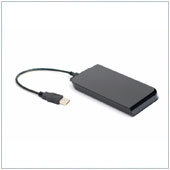 There are numerous advantages to using Apple’s computers in your office.
There are numerous advantages to using Apple’s computers in your office.
When you work with systems that are part of the Apple ecosystem, they just seem to work. Try to connect a machine or device that is not compatible with Apple however, and there can be problems. For example, many users have a tough time getting external hard drives and USB storage devices to work on both Mac and Windows.
On the surface, the files and folders of both Windows and Mac do the same thing and are relatively similar. The main difference comes in the file systems used by operating systems to control how information is stored and received on hard drives. This information is represented to us as a file structure – files and folders. Without a file system, we would not be able to tell the difference between information and data stored on the computer.
While it makes perfect sense to have only one type of file system, there are actually over 20 in use today. The most popular are:
- HFS+ – The main file structure used by OS X. All Mac hard drives that the OS is installed on are formatted using this structure. Windows does not natively support this file structure, meaning that when you plug in a hard drive formatted using HFS+, Windows will not be able to read it without installing a third party app first.
- NTFS – The main file structure preferred and recommended by Windows. OS X machines can read files and information on NTFS formatted drives but they cannot write (transfer) files onto them.
- FAT32 – An older file system that is supported by both Windows and OS X. This means that both systems can read and write files to drives formatted using this system. The limitation of FAT32 is that it has trouble supporting files larger than 4GB.
- ExFAT – A newer version of FAT32, sometimes referred to as FAT64. This system was developed to eliminate the file size limitations of FAT32. Windows systems can support this system as can Mac systems running OS X 10.6.5 and above.
Because OS X and Windows don’t support the other’s main file system, it is advisable to ensure that you format your external hard drives and USB drives to be either FAT32 or exFAT. The optimal choice would be exFAT.
How to format your external hard drive or USB on a Mac
If you work in a company that uses both Windows and Mac machines, or would like to be able to transfer files between systems using an external drive, you should first format the drive so that it can be read by both systems. You can do this on a Mac by:
- Plugging in the drive you would like to format.
- Clicking on the Magnifying glass in the top-right of the window and typing Disk Utility.
- Opening Disk Utility by clicking on it from the results and selecting the drive you would like to format.
- Selecting Erase from the right box.
- Clicking on the button beside Format and selecting ExFAT.
- Entering a name for the drive in the box beside Name, left-clicking on Erase and following the prompts
Warning: Before your format any drive, you should be sure that there are no files you need or would like to keep because they will be erased and will be unrecoverable.
If you are looking to learn more about how a Mac can fit into your office, or would like to know more about formatting hard drives please contact us today to see how we can help make this happen.







 by
by